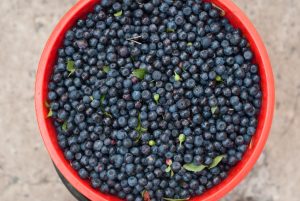
The healthy Nordic diet in the study consisted of berries, root vegetables, legumes, cabbage, nuts, fish, whole grains, poultry, and game.
Participants who were not on the Nordic diet consumed butter, had less berries and vegetables, and did not have any regulations on their meat or grain intake.
Further studies will look at the possibility of weight loss with the Nordic diet.
Nordic diet: Foods to eat and avoid
The Nordic diet focuses on foods commonly consumed in Nordic countries: Norway, Denmark, Sweden, Finland, and Iceland. The diet was first developed in 2004 by nutritionists, scientists, and chefs. Compared to the typical Western diet, it contains less sugar, less fat, double the fiber, and double the fish and poultry.
Based on the Nordic diet guidelines, you should eat plenty of fruits, berries, vegetables, legumes, potatoes, whole grains, nuts, seeds, rye bread, fish, low-fat dairy, herbs, spices, and canola oil.
Foods that should be consumed in moderation include game meat, free-range eggs, and cheese and yogurt.
Foods which should be consumed rarely or never are red meat, animal fats, sugar-sweetened beverages, added sugars, processed meats, food additives, and refined fast foods.
As you can see, the Nordic diet is actually quite similar to the Mediterranean diet, but the biggest difference is the choice of oil. The Mediterranean diet strongly favors olive oil, while the Nordic diet prefers rapeseed (canola) oil.
Health benefits of the Nordic diet
On a larger scale, the Nordic diet has also been shown to benefit the environment, as it focuses on the locally grown, sustainable produce. The diet gives its preference to pesticide-free organic food, which is also beneficial to consumers and the environment alike.